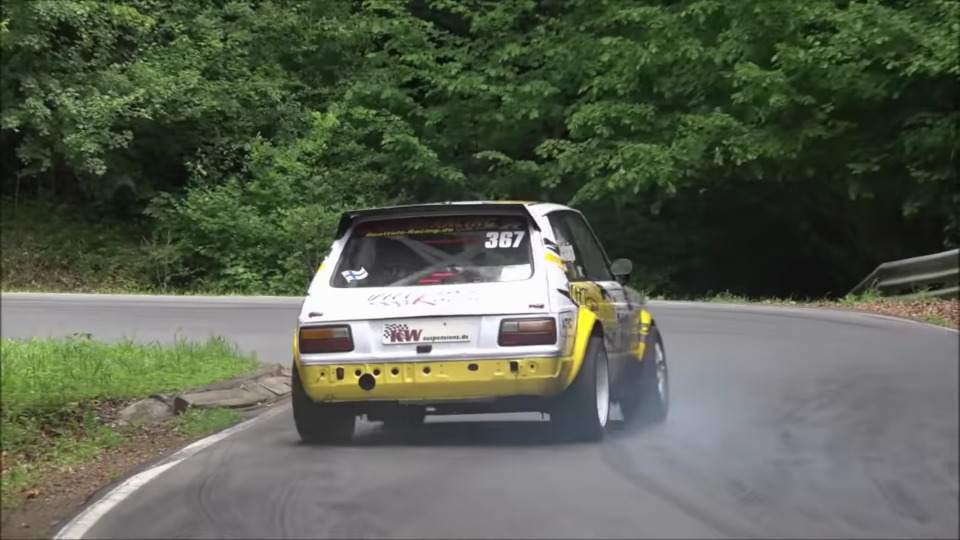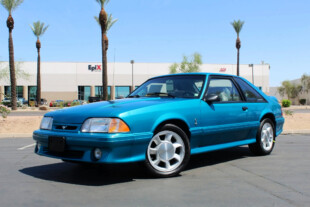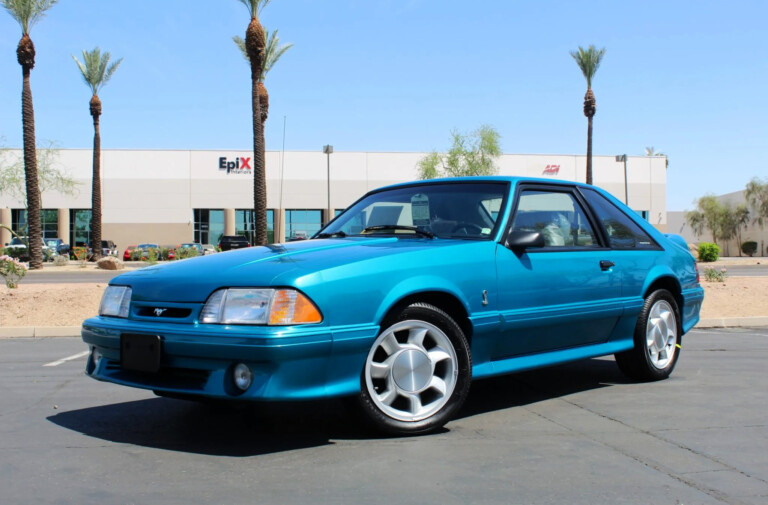Though the Starlet doesn’t get an awful lot of recognition in the States these days, it is one of the last rear-wheel drive econoboxes Toyota sold on American shores. Tiny, short, light, and with a tuned 4AGE—very quick. Mikko Kataja, a motorsports engineer at Bosch, saw the potential in this featherweight and used his education to turn it into one of the best respected hillclimbers in Europe.
An Appetite for Revs
The powerplant, a 1.6-liter 4AGE revving to eleven grand, makes a noise that sounds like a million angry bees flying through a ventilation shaft. To achieve such a redline, Kataja had to supply his own handcrafted intake and exhaust components for the right flow. Its rich induction noise comes from his own intake throttle bodies: massive barrels which are designed to work within the engine’s 8,000 to 11,000-rpm sweet spot. It’s the level of engineering that only a man who runs his own motorsports business would rise to for the modest amount of power the engine produces.
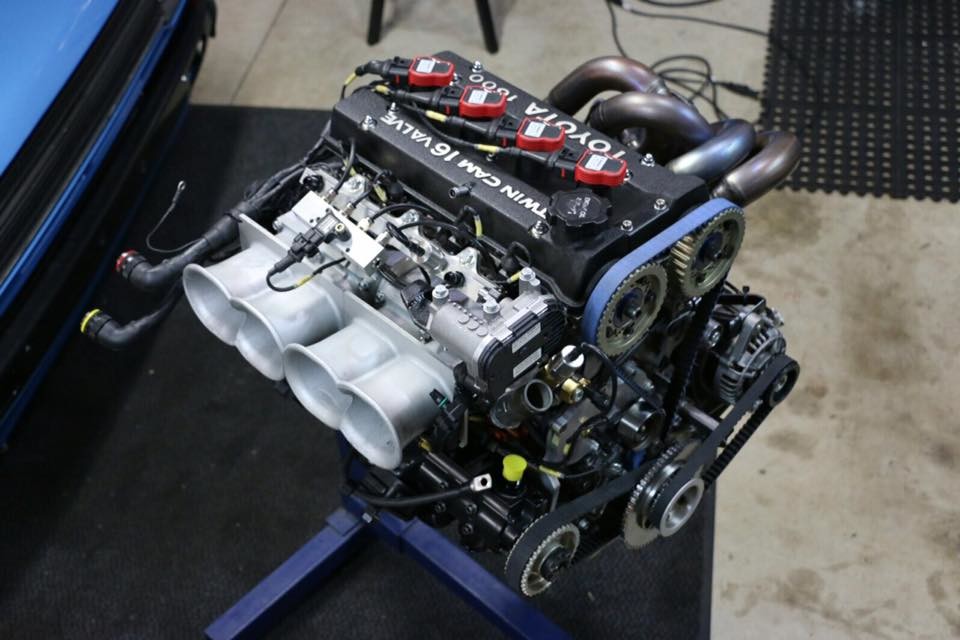
The handcrafted trumpets will make any 4AGE nut salivate. Photo credit: VHTRacing Engineering
Despite not making much grunt by today’s standards, its acceleration is staggering nevertheless. The engine consists of 20-valve block, a 16-valve “blue top” head, AutoVerdi rods, custom Wiseco pistons, a custom Moldex crank, a dry sump system, and a Bosch MS6.4 ECU. This potent 1.6-liter package makes 250 horsepower at 10,200 rpm—that’s 156.25 horsepower per liter!
That power flows through a ZF Motorsport carbon ceramic clutch to a Sadev six-speed sequential gearbox, then onto a carbon fiber driveshaft before getting split through an AE86 rear end with a Cusco limited-slip differential. As a side note, the single paddle controlling the Sadev is an interesting piece commonly seen in rally cars. Downshifts are achieved by pressing the paddle forward and a pull backwards grabs the next higher gear.
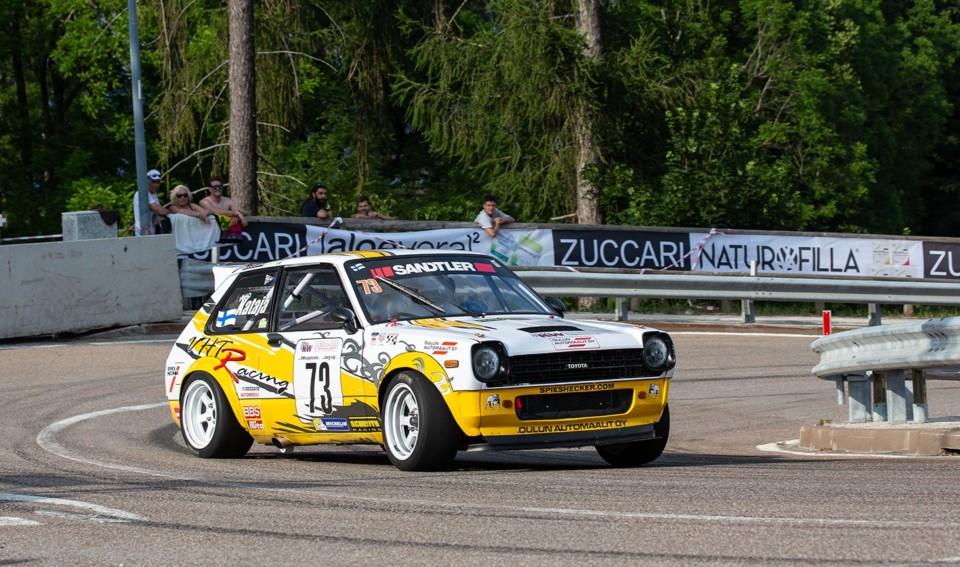
Photo credit: Giuseppe Carrone
The motor constantly hums in its narrow powerband and never drops much below 6,000 rpm. With short shift times, strong traction, and only 1,780 pounds to push around, Kataja’s Starlet sprints to 60 in just 4.5 seconds! This is ideal conditions of course, but even a 5.5-second sprint on a dirty public road is impressive. For an economy car sold during an oil crisis, that’s remarkably speedy.
Never a Dull Moment
Despite its impressive punch, its strength is obviously its nimbleness. With KW shocks at the rear and ZF Motorsports shocks up front, thick swaybars, it’s footwork is sorted. Plenty of fiberglass components higher on the car keep the center of gravity low, and a FIA Group F-spec cage improves the rigidity. We can see just how quickly the car changes direction, and how one snatch of a wheel with the powerful brakes can pitch it into an abrupt slide. This is one of the few full-sized cars which, due to its weight and its wheelbase, nearly lives up to the overused and often inappropriate adage of “it handles like a go-kart.”
With quick countersteering and a lot of accuracy, he’s able to pivot the car through fast switchbacks sideways while going very quickly. Note how the car steps out under power at 2:19, and he’s still able to use that pendulum effect to quickly countersteer and point the car in the right direction. Though this nervousness lets him place the Starlet within inches of the guardrails regularly, it also requires him to as accurate as a surgeon and never rest for a second. Fortunately, Kataja has that combination of courage and determination that the Finns are known for. I believe they call it sisu.




